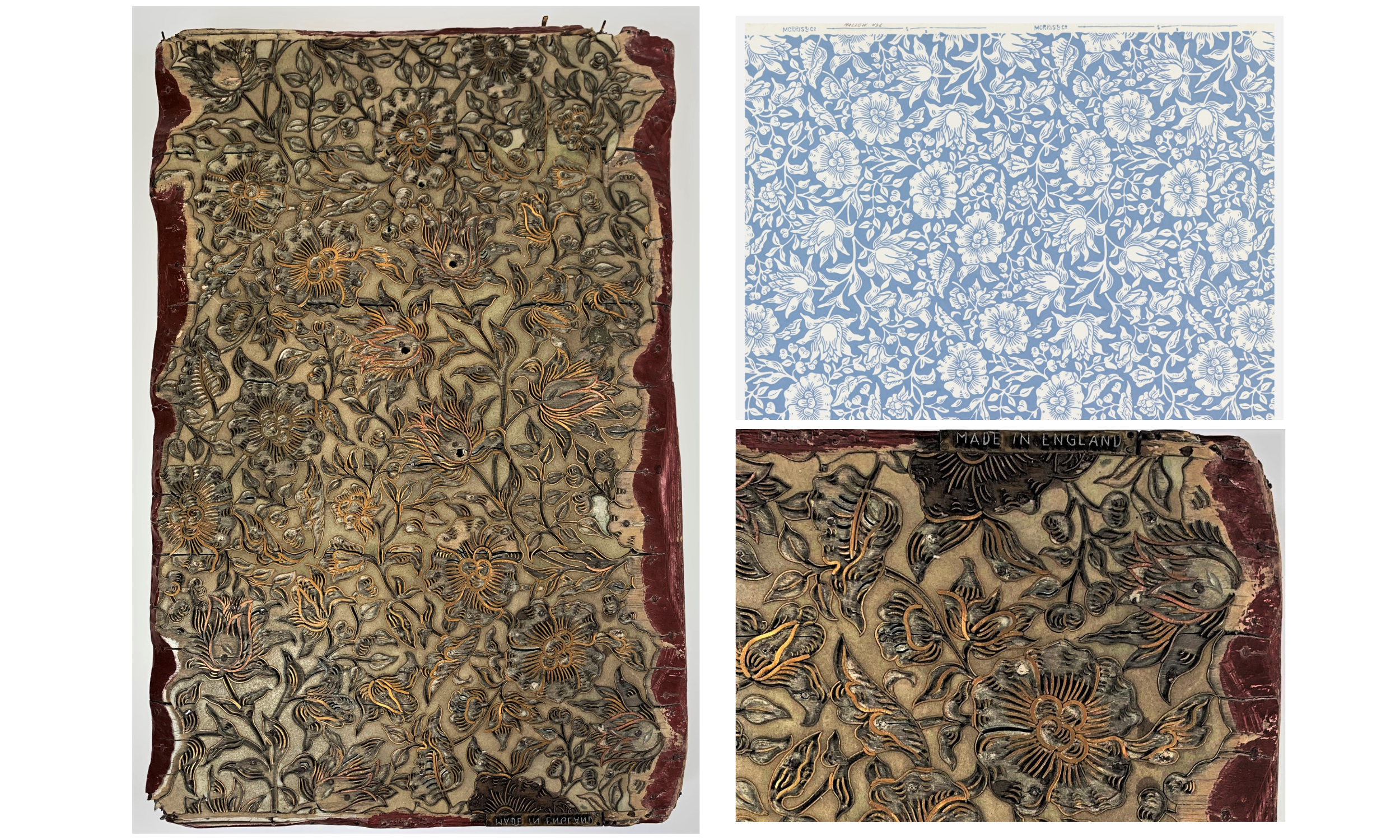Faulkner Wallpaper Woodblock
October 1, 2022
This month’s Artifact of the Month is a woodblock designed by Kate Faulkner in the late 1800s (#1989.2118). The block consists of three layers of one-inch-wide wood planks laminated with nails and screws. The top layer is carved around the edges and there are outlines of a floral pattern made of brass and copper wire along with felt. The edges of the woodblock are painted red, and there is a reverse stamp on one of the edges that reads “Made in England.” It was initially believed that the artifact was designed by William Morris because it came from the studio of his company, Morris, Marshall, Faulkner & Co., and its successor, Morris Co. The name of the pattern on the back of the woodblock, however, in conjunction with other evidence revealed that the designer was in fact Kate Faulkner. The floral pattern, Mallow, includes three distinct kinds of flowers as well as branches, leaves, and vines. This stylized, informal subject bucks the trend of many other late mid-1800s wallpaper makers and refers more to Japanese tradition, rather than the Victorian customs of the period.
While William Morris has become the historical face of the Arts and Crafts movement of the 1800s, the title of artist and designer was shared by both men and women within the movement. One of the co-founders of Morris, Marshall, Faulkner & Co, Charles Faulkner was the financial manager of the company while his two sisters, Kate Faulkner and Lucy Orrinsmith Faulkner, collaborated with Morris to design and create artwork in a variety of media. While both sisters worked in tile and porcelain painting, Kate was the only one of the siblings who also designed wallpaper woodblocks. In contrast to Morris’s fanciful designs, her wallpaper designs tended to be simpler and lean towards realism while keeping the spirit of the Arts and Crafts theme of stylized flora and fauna of the English countryside. Researching this artifact brought new depth to the museum’s understanding of the piece. Long referred to as “the William Morris woodblock,” we now know it connects to the work of women in 19th century England as well as the Arts and Crafts movement. Revealing more layers to a story is exciting for staff and researchers, and we hope for our audience as well!
[Photo credit for the printed wallpaper image to the Cooper Hewitt, Smithsonian Design Museum]
Category: Decorative Papers
Region of Origin: European
Keywords:
Woodblock

